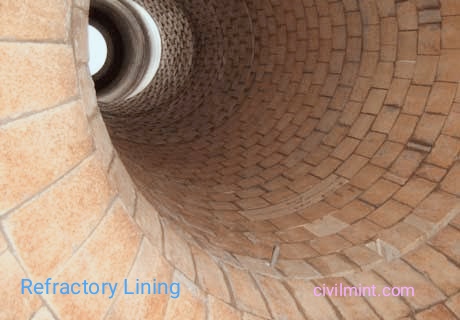Table of Contents
Introduction of Refractory Lining
Refractory linings are safety layers for industrial furnaces, pipes or equipment, providing high temperature resistance and protecting the structure from thermal shock, abrasion and erosion.
Refractory linings protect pipe and equipment materials from direct exposure to heat from fire or liquids. They are very important components for boilers, furnaces and certain pipes.
Proper refractory installation is essential for the safe and efficient operation of furnaces and boilers. In this article, you will learn about materials, selections and processes for refractory linings.
Let’s look into the topic, starting with that definition.
What is Refractory Lining?
Fire Resistant Lining provides a protective layer within equipment as insulation for high temperature applications. Refractory linings resist high temperatures, thermal shock, abrasion and chemical corrosion.

Furnace refractory linings are generally made of refractory bricks or monolithic refractories.
Typical examples of refractory lining include firing furnaces, blast furnaces, electric furnaces, boilers, drying plants, high temperature differential heat meters, and muffle furnaces.
Why Refractory Linings are Used?
- Refractory linings are often used at very high temperatures to provide a thermal barrier between the wall of the pipe/plant and the hot medium.
- Withstands physical stress.
- Protects against corrosion and erosion.
- Provide Insulation
For this reason, refractory materials are used in a wide variety of useful applications. They include blast furnaces, heating furnaces, reactors, combustion heaters, hydrogen reformers, ammonia primary and secondary reformers, cracking furnaces, utility boilers, catalytic crackers, air heaters, sulfur furnaces, and metal and slag Widely used in various other vessels containing hot media.
Materials Used in Refractory Linings
Refractory Lining Materials Common materials used as refractory lining materials are:
- Alumina or alumina (high alumina brick)
- Silica
- Magnesium oxide
- Calcium oxide carbide
- Molybdenum disilicide
- Tantalum hafnium carbide
- Corundum brick
- Refractory plastic
Refractory linings are composed of refractory aggregates, additives, powders, binders, water, or other liquids composed of amorphous or solid refractory products.
What is the Standard Thickness of Refractory Lining
The thickness of the refractory lining is usually between 80 mm and 300 mm, depending on the type of furnace and the material being melted.
In certain applications there may be two layers of refractory lining made of different materials. For example, in the refractory lining of converters he has two layers. The outer layer is made of refractory magnesium with a thickness of 50-100mm, and the inner layer is made of magnesium brick with a thickness of 300-500mm.
Sum Up
Refractory linings typically include a safety or reinforcement layer behind the working lining that contacts the furnace contents. The whole body is wrapped in a metal shell. Temperature gradients within the system and the properties of all materials must be considered.
Fire resistant linings are applied to the inner surfaces of process equipment. It protects the steel construction of furnaces, boilers, vessels, ducts and other equipment from extreme conditions by acting as a protective insulating layer on the inside surface.
